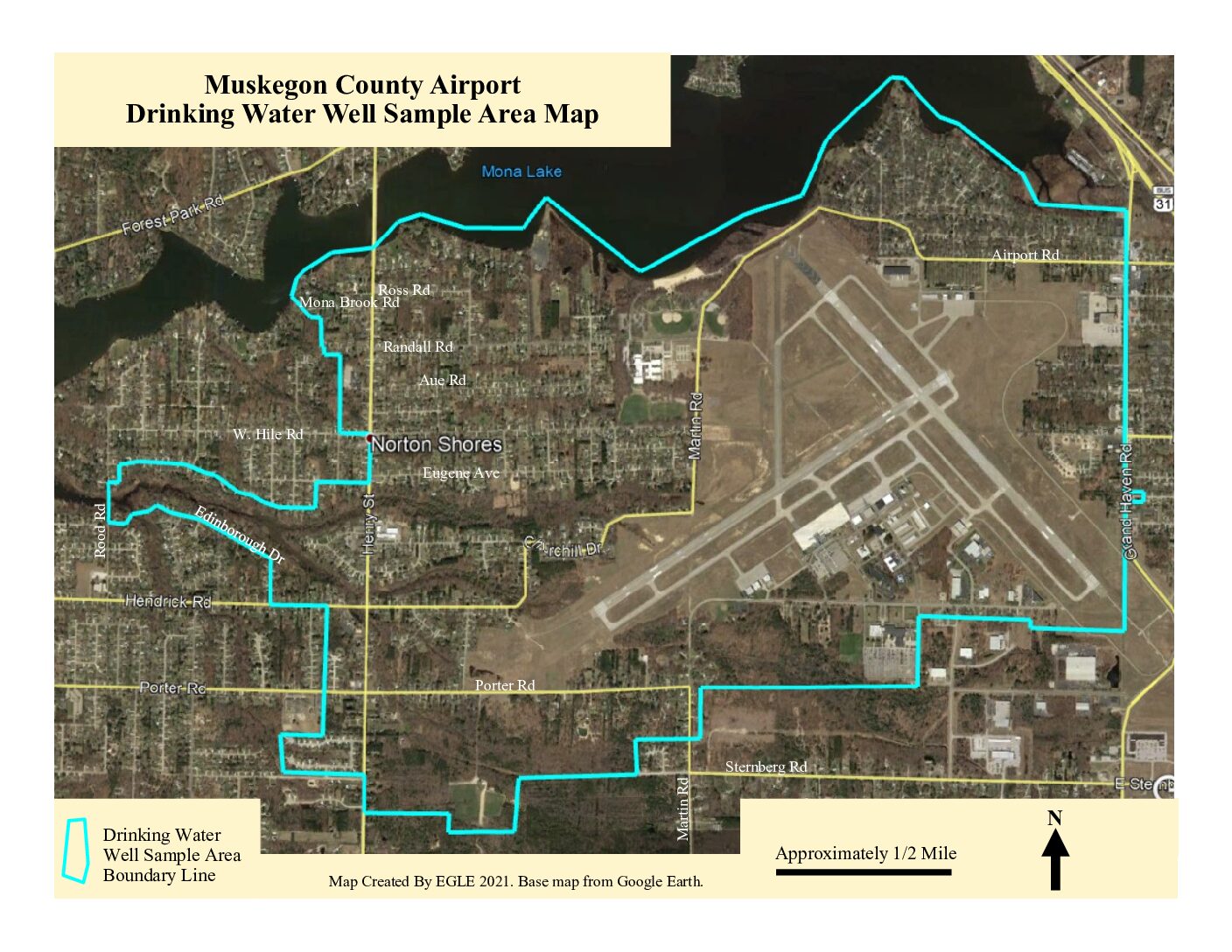Written By: Evan Hall
In Michigan, PFAS (per- and polyfluoroalkyl substances) continues to pose an environmental and public health challenge as testing for PFAS chemicals has increased, revealing more affected sites and regions. PFAS has been detected in private and public drinking water systems in a number of areas across Michigan. In Plainfield Township and Ann Arbor, levels above the Michigan drinking water standards were found and required the addition of activated carbon to provide safe water to the area’s residents. In the Rockford area, over a thousand private wells were found to be contaminated, requiring $60 million dollars to extend public water to affected residents. For Grand Rapids, Muskegon, Kalamazoo and Wyoming, water systems utilizing Lake Michigan as their source do not require treatment as they had detected low levels of PFAS.
The Michigan Department of Environment, Great Lakes and Energy or EGLE, has been leading the charge in testing for PFAS through its Michigan PFAS Action Response Team or MPART. Starting in 2018, the team has been conducting PFAS testing in the Muskegon area, including at and around the Muskegon County airport, which has been the main source of PFAS contamination for the surrounding homes. One of the leading causes of the airport’s PFAS issue stems from a firefighting foam, Aqueous Film Forming Foam (AFFF), which is used to extinguish liquid fires.
Since its discovery at the Muskegon County airport, measures have been put into place to minimize the effects of the PFAS contamination and better ensure the safety of affected households. To start, EGLE connected 29 private wells to city water, eliminating household exposure to PFAS contaminated groundwater. EGLE has affirmed that for the Muskegon County airport site and the surrounding affected area, connecting more PFAS-impacted homes to city water remains the top priority. Furthermore, over the next few months EGLE officials plan to resample affected homes to ensure that the filters in place are working properly and that other public health measures taken are still effective. Disappointingly, even after all the contaminated wells are connected to public water, contaminated groundwater has still been detected in the area and is venting into Mona Lake, alongside several small drains. To fully combat this issue, a comprehensive plan is needed to treat the contaminated groundwater and limit its migration to surface water.
Short-term fixes for PFAS contaminated households surrounding Muskegon County airport have also been put in place. According to EGLE, Public Health Muskegon County has reported 63 homes have had point of use filters installed in order to help filter out PFAS. Looking forward to larger scale solutions, in October of 2021, the federal Environmental Protection Agency (EPA) announced plans to update the national drinking water standard to better regulate PFAS. The agency will also consider a new process to eradicate PFAS, both at existing chemical sites and those in new production. Additionally, with the passing of the new infrastructure bill, 10 billion dollars will go directly towards addressing PFAS issues.
While it unfortunately appears that PFAS pollution will remain an ongoing environmental and public health issue throughout Michigan and in Muskegon County, it is good news that PFAS pollution is finally being addressed. Furthermore, policies are being proposed to reduce the production and use of PFAS chemicals to eliminate the future impact of these harmful substances. MPART is planning to hold a public meeting, likely in June of 2022, to give an update on PFAS, however, specific details have yet to be released. To stay informed or get involved in the PFAS issue in Muskegon County, check out the list below of local and state resources.
Local and State Resources
EGLE site on the Muskegon County airport area
https://www.michigan.gov/pfasresponse/0,9038,7-365-86511_95600_95631-508871–,00.html
EGLE site with FAQ on PFAS
https://www.michigan.gov/pfasresponse/0,9038,7-365-95571_95583—,00.html
Muskegon County Public Health site on PFAS
https://www.co.muskegon.mi.us/1429/PFAS-Overview
MPART site
https://www.michigan.gov/pfasresponse/0,9038,7-365-86513—,00.html
Special Thanks:
Thank you to Dr. Rediske from Grand Valley State University’s Annis Water Resources Institute for his interview with WMEAC, during which he provided a significant amount of key information used for this post and to Peter Van Heest of EGLE, who provided Dr. Rediske with the most up to date Muskegon County PFAS data.
Other Sources
MLive article
EWG article
Photo Credit: MPART Website


